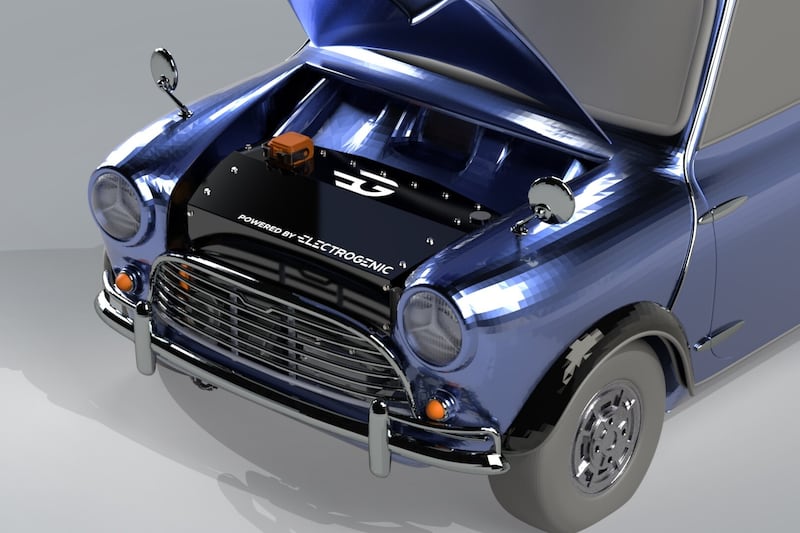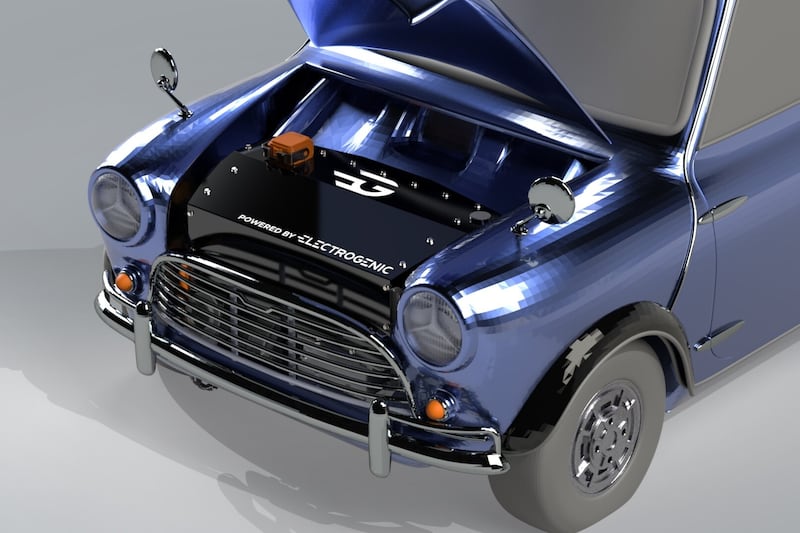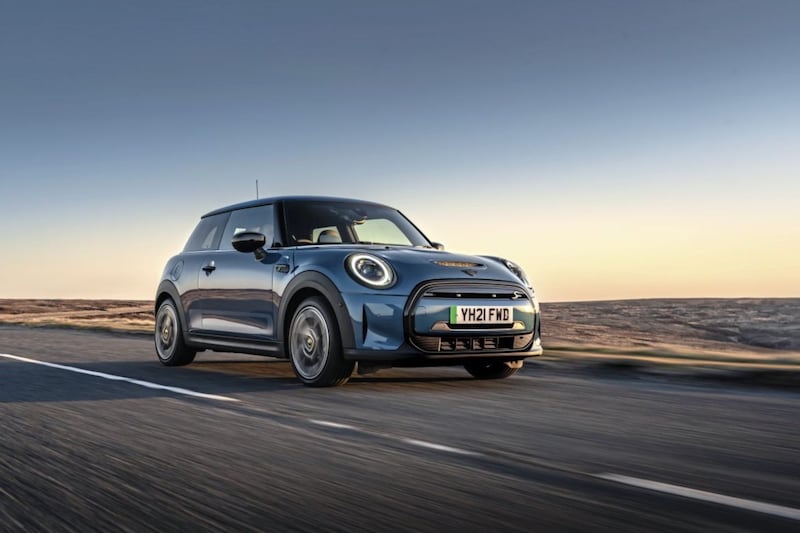
MY FIRST time driving the new Mini Electric was also my first time driving a Mini full-stop. Like all right-thinking petrolheads, I've always had a soft spot for this diminutive motoring icon, so I was delighted to finally get a spin in the BMW-owned brand's latest all-electric model during the recent SMMT Test Day event at Wetherby Racecourse.
My affection for these cars probably has its roots in the 'proper' Mini once owned by a friend of my mum's in the early 1980s, a bile-coloured Leyland-badged car which she eventually traded for a Mk2 Ford Fiesta in Commodore 64 beige. It didn't feel that much bigger than the plastic pedal car I'd then just grown out of, and I can remember loving its famous 'go kart' feel as we whizzed over bumps and around corners.
With no pesky seatbelt laws yet on the books, I was free to lean over the front seats to marvel at the Mini's speedometer, mounted smack-dab in the middle of the dashboard. This was a feature I instantly deemed to be far more 'wheeker' than the more conventional clocks in my mother's own Renault 5.
Later, I saw The Italian Job. Frankly, I'm still angry that (spoiler alert) Michael Caine and co chucked their faithful Mini Coopers off that cliff: 10-year-old me was left hoping that an Italian judge got to throw the book at them for their crimes against Issigonis's iconic creation, never mind the actual heist.
Like many fans of the original Mini, I wasn't fussed on BMW's re-imagined version when it was first launched 20 years ago, mainly because the car just looked far too big. However, time has been kind to Frank Stephenson's 21st Century re-design: although the Mini has grown even more over the intervening years, the 2021 car is positively petite on modern roads literally dominated by oversized SUVs and crossovers.

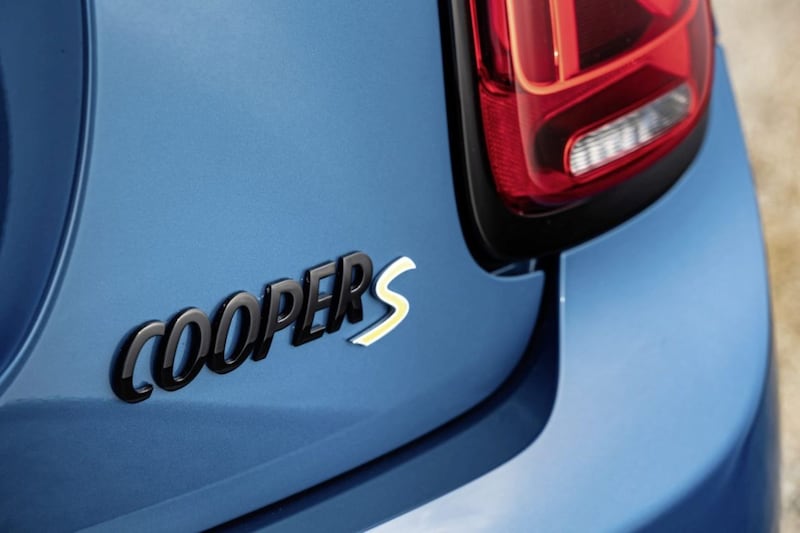
Only available as a two-door, the new Mini Electric has been externally styled to look pretty much indistinguishable from its petrol-powered Cooper S sister. In fact, it actually comes badged as a Cooper S, with only Mini's cute little 'E' logo on the opposite side of the boot lid giving away its combustion-free game.
OK, so the bonnet air intake and front grille have been filled in, there's a pair of fog lights instead of twin exhausts round the back and the numberplates have those tell-tale green flashes on them, but side-on you'd never know the new Mini Electric was actually an EV.
Such subtlety makes it ideal for those who want the benefits of a plug-in car without advertising their lifestyle choice to the world.

For those who do want to show off their Electric credentials a bit more, Mini still offer those funky 'Electric Power' 17-inch alloys styled like three-pin plug sockets as a no-cost option exclusive to the EV version, along with 'Energetic Yellow' wing-mirror caps.
As soon as you get into the Mini Electric, you're know it's a car made by BMW. The cloth sports seats are extremely comfy and the overall quality of the interior is excellent, with soft-touch surfaces everywhere, pleasingly ergonomic controls (including a nice selection of retro aircraft-style toggles) and an almost eerie lack of road noise intrusion while on the go.
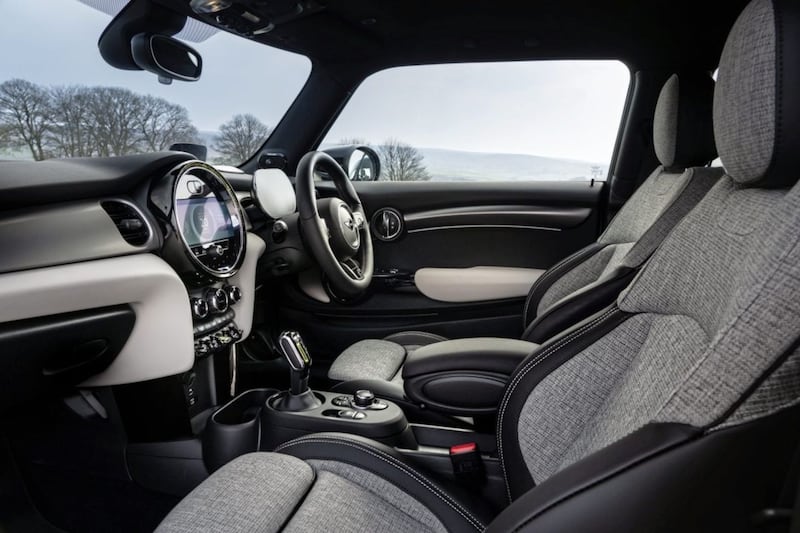

Pleasingly, the dash-centred dial has been carried over from the original Issigonis design, though these days it's about five times bigger (possibly a little too big, in all honesty) and houses the car's touch screen infotainment system rather than the speedometer, which now sits on a separate and rather cool little 'floating' panel mounted atop the steering column.
It's literally a central feature across all four Mini Electric variants, from the 'base spec' Level 1 right through the progressively better-equipped Level 2 and Level 3 models up to the range-topping limited-to-300-cars Collection version.
And, while Mini might now be very much positioning itself as a 'premium' marque, the Mini Electric is actually still just about affordable enough to keep it in touch with its 'people's car' roots: Level 1 cars start at £26k on-the-road including the government's £2,500 Plug-in Car Grant and come well-appointed with an 8.8-inch touchscreen featuring useful toys like Mini's Navigation pack and Apple Car Play compatibility, plus air-con and cruise control.
Level 3 (£32,000) and Collection (£32,550) offer cool but inessential toys like a head-up display, self-parking, upgraded LED headlights and a panoramic roof – it's a pity the latter isn't an option across the entire range.
On paper, I would opt to spend £28k for a Level 2 car which adds heated front seats with centre armrest, electric folding mirrors, rear-view parking camera and sensors (not that you'll really need them) and a better choice of alloy wheels. However, my test vehicle was a Level 1 car and I really didn't find it lacking in any way. It was extremely comfortable and, above all, fun to drive.


That's the thing about the Mini. While those 'people's car' credentials may have waned along with rising prices over the years, it's still very much a 'driver's car', something I can now fully appreciate after having taken one for a spin on the English A and B roads it was designed for – I'm pretty sure I was smiling the entire time I was behind the wheel.
With its punchy 136kW motor (shared with BMW's i3) producing 184 hp and 199 lb ft of instant torque, delivering 0-62mph in 7.3 seconds – compared to 178 hp and 206 lb ft at 1,350 rpm for the petrol Cooper S with a 0-62 time of 8 seconds – near 50/50 weight distribution and lowered centre of gravity, the Mini Electric is definitely an entertainingly lively incarnation of this beloved supermini.
Set the adjustable re-gen braking to maximum and you get a brilliant 'one pedal' driving experience which makes the car's 'go kart' vibes even more enjoyable.
While the petrol Cooper S will take you all the way to 146mph, the Electric version is limited to 93mph, though that hardly matters in a real world driving environment. What is rather more important is range, and sadly this is still one of the car's shortcomings.
With its 32.6kWh battery pack affording the Mini Electric a WLTP range of just 145 miles, it can take you only slightly further than quirkier, tech-packed competitor the Honda e (137 miles WLTP) and is left literally streets behind its cheaper, class-leading competitor the Renault Zoe ZE50, which can squeeze 245 miles WLTP out of a single charge of its 52 kWh battery pack.
In other words, at the moment the Mini Electric is still best suited to being a city car or a second vehicle used for shorter journeys – especially here in Northern Ireland where the charging network is still so limited. If you do manage to track down a 50 kWh DC Rapid Charging point, Mini say you can plug into the socket hidden behind the petrol flap for an 80 per cent re-charge in just 30 minutes.
However, soon all Minis will be electric: the marque recently announced its intention to switch production entirely to EVs from 2025 onward, so my guess is that they are currently working towards a major battery pack revision that will make the Mini much more usable and competitive.
Having already got so much 'right' already with the current Mini Electric, the future is looking bright for this classic British car.
I'm certainly glad to have finally got behind the wheel of one, hopefully not for the last time.

MINI ELECTRIC: AT A GLANCE
- Price: £26,000 to £32,550 OTR including £2,500 Plug-in Car Grant
- Drivetrain: 32.6kWh lithium ion battery, 136kW electric motor with 184bhp and 199lb ft torque, single-speed automatic transmission, front-wheel drive
- Performance: Top speed 93mph, 0-62mph in 7.3 seconds
- Range: 145 miles WLTP
- Vehicle excise duty: £0
- Benefit in kind: 1 per cent
- Euro NCAP rating: Four stars (2020 model)





